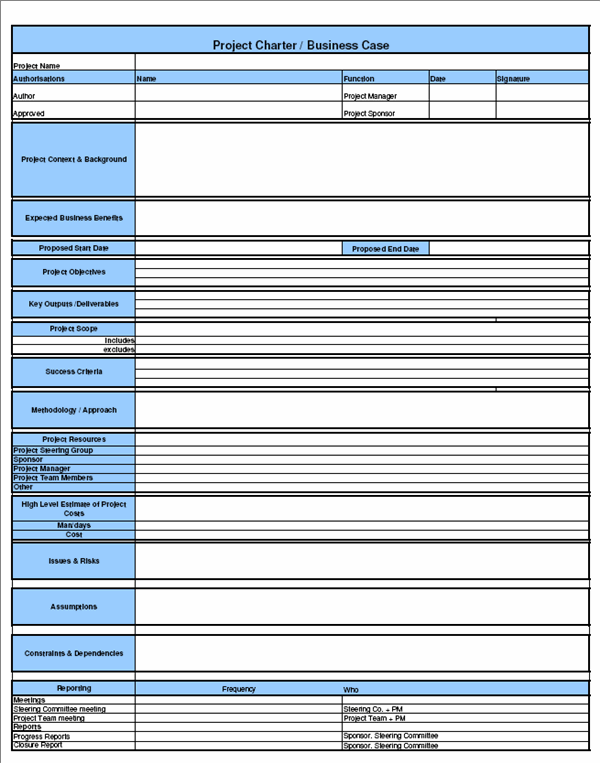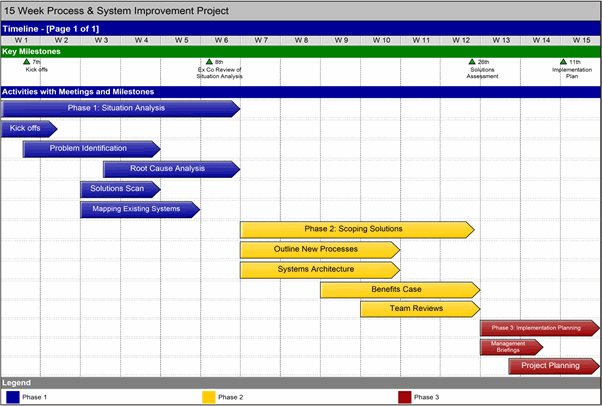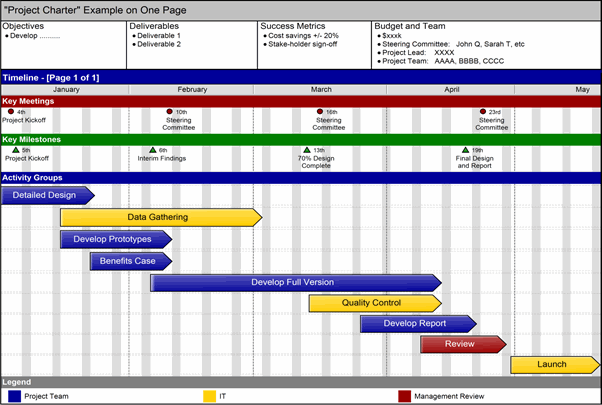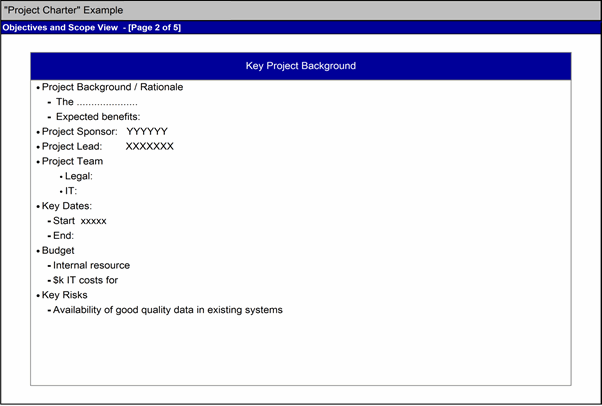A project charter (or project definition) is a generally a (short) document that outlines key aspects of the project, such as its rationale, goals, deliverables, key dates, team structure, budget etc. It has a number of potential purposes:
The depth and detail such a document should go into will vary by situation. Sometimes it can be very simple (e.g. 1 page), sometimes much more. In general terms though, a good project charter will outline “where the project is going” and its scope with sufficient clarity for agreement / sign-off by the project sponsors, approvers and other relevent players, and with sufficent detail that the project team is not in doubt as to what they need to achieve. (Typical contents of a project charter are explained further down this page).
More formal definitions of a project charter include:
A project charter will contain some, or all, of the following elements:
The exact contents, sections and layout will naturally vary from company to company and project to project, and according to the medium used (e.g. Word, Excel, PowerPoint or something else), but to give you an idea of what one can look like, we’ve included a fairly detailed example below (click on the link to see a larger image).

To help you better understand what project charters can look like and / or to help you get started, we’ve put together three templates for you, one in Microsoft Excel, one in Word, and one in Swiftlight. Just follow this link to see them and, if you are interested, download these project charter templates.
Swiftlight can help in three ways:

Click on the link to see a larger version of this project timeline.

Click on the link to see a larger version of this “project charter on one page”.

Click on the link to see a larger version of this example.